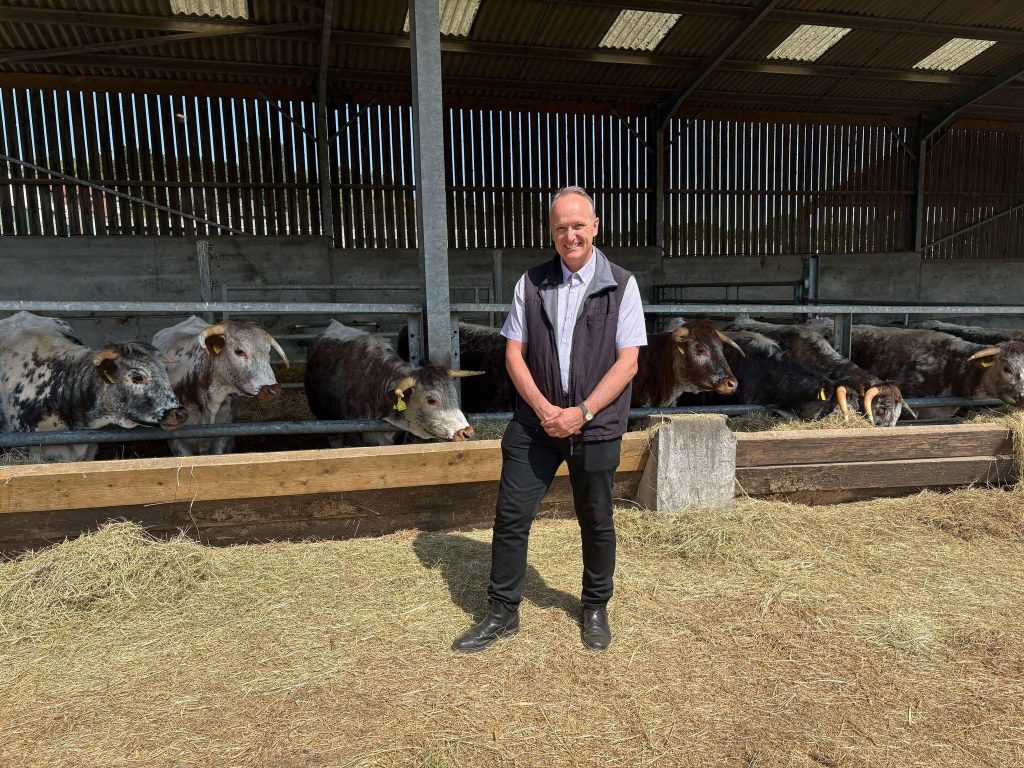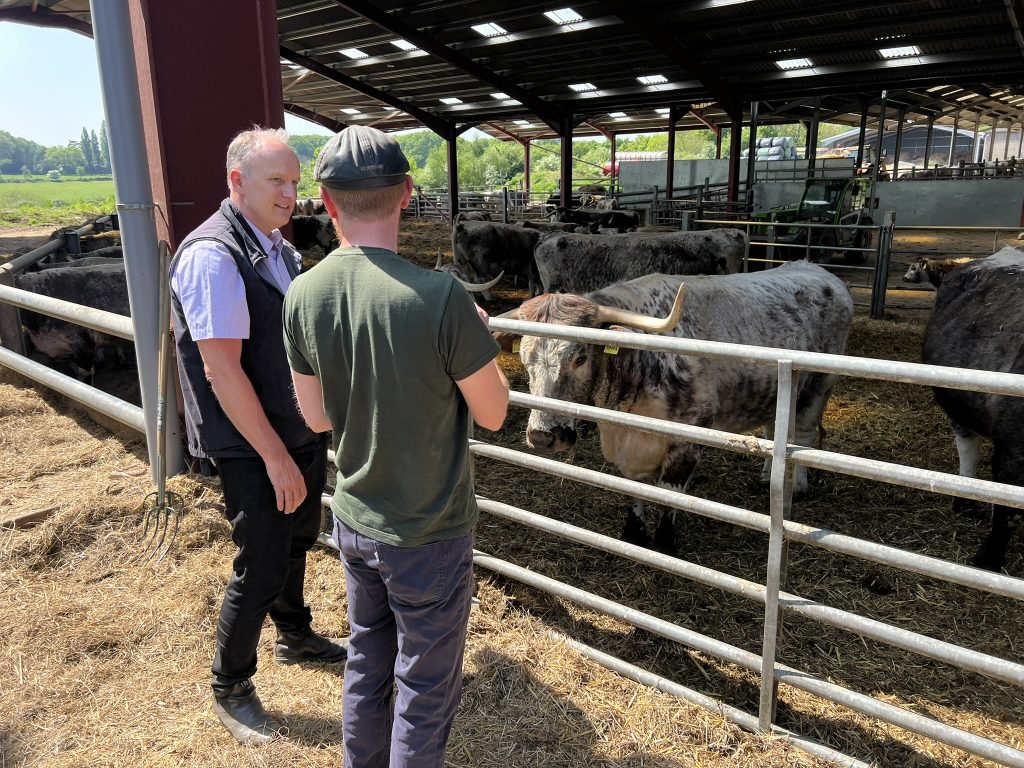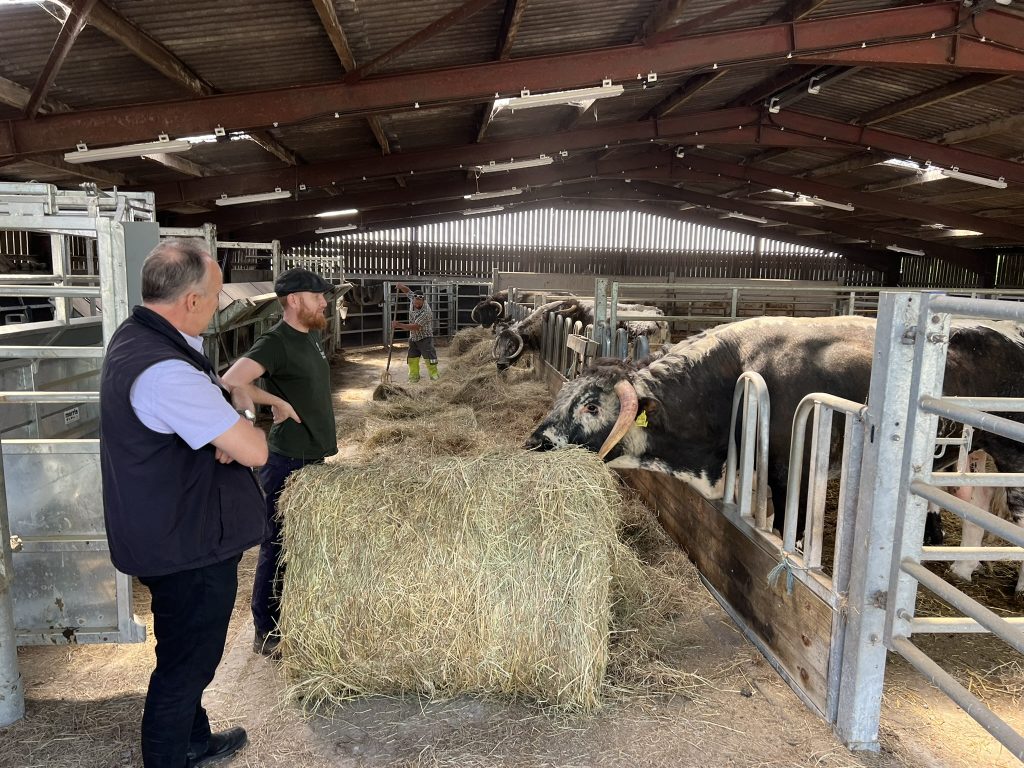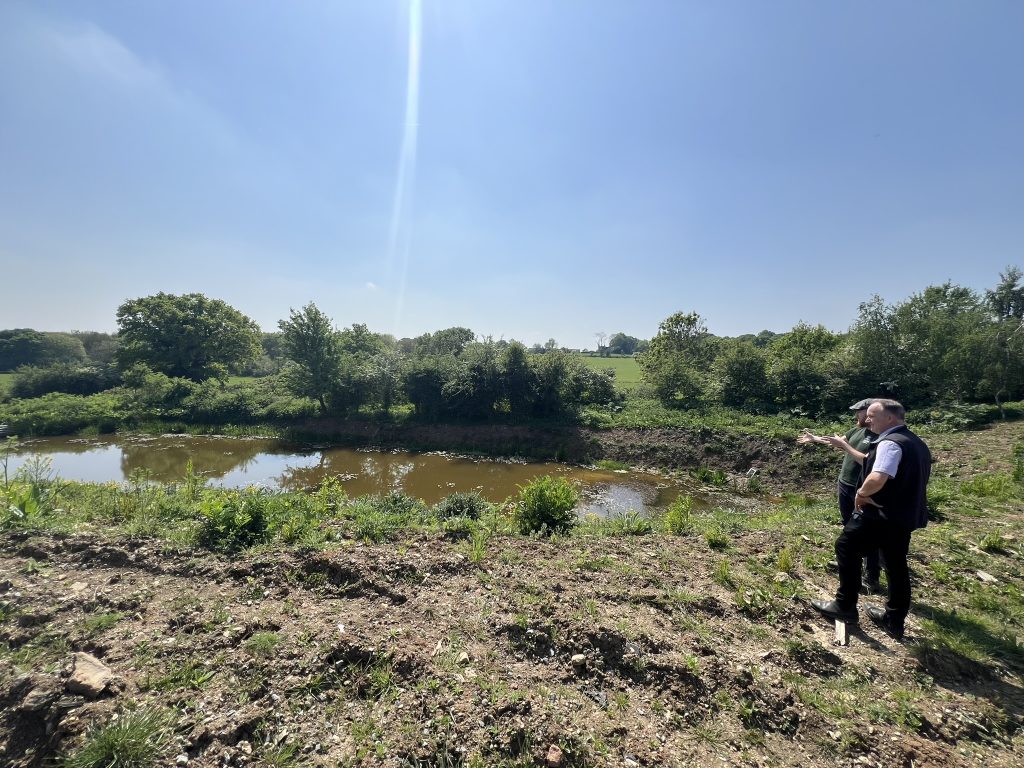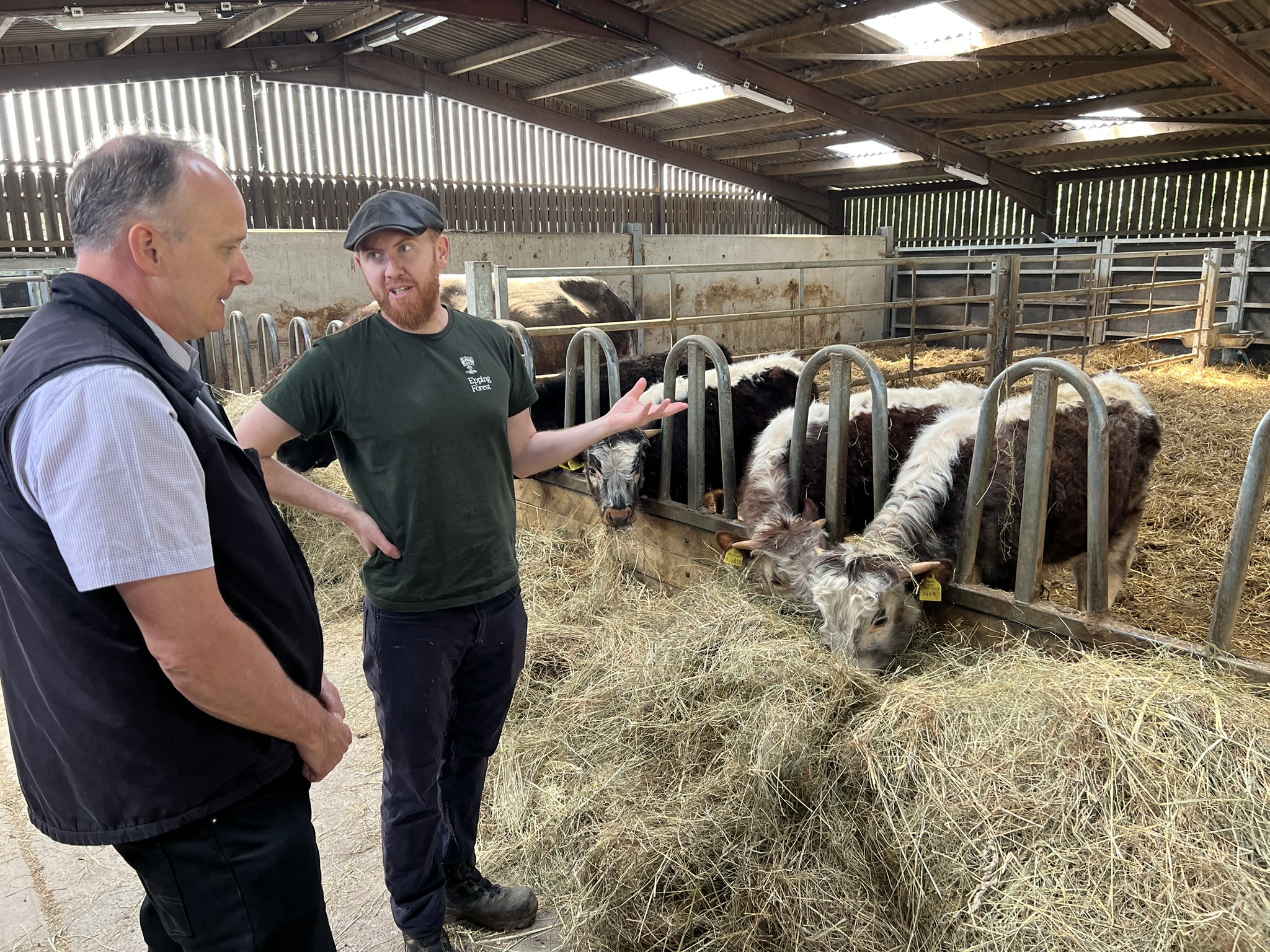Veterinary MP Neil Hudson visits Epping Forest cattle before spring turnout | Dr Neil Hudson
Shadow Minister for the Department for Environment, Food and Rural Affairs , Dr Neil Hudson MP, recently visited Epping Forest’s English Longhorn cattle in their winter facility, ahead of their turnout to local grazing sites over the summer months.
The English Longhorns, known for their easy-going nature, have been part of Epping Forest’s landscape for centuries and were reintroduced in 2002 following a hiatus due to the 1990s Bovine Spongiform Encephalopathy (BSE) crisis. Today, the cattle play a vital role in conserving Epping Forest’s ancient acid grassland and maintaining its rich biodiversity by controlling plant growth and encouraging wildflowers and insects.
The herd is managed through innovative NoFence GPS collars, which allow the cattle to roam safely within virtual boundaries without the need for physical fences. During the summer, the cattle graze across key sites such as Chingford Plain, Fairmead, and Bury Wood, with smaller groups in other areas.
Dr Neil Hudson, MP for Epping Forest and veterinary surgeon, said:
“It was a pleasure to see our wonderful Epping Forest cattle before their spring turnout.
“I am so pleased that I was able to hear more about the innovative GPS cattle collars and hear about the cattle’s important part in conserving our precious forest and enhancing biodiversity.
“I look forward to seeing these majestic Longhorn cattle out across Epping Forest over the coming months.”
Ben Murphy, Chairman of the Epping Forest & Commons Committee at the City of London Corporation, said:
“We were delighted to welcome Dr Hudson to Epping Forest to learn more about our use of innovative cattle-grazing technology across London and Essex’s largest green space.
“Grazing is a vital part of how we manage and conserve over 8,000 acres of ancient landscape. The cattle’s natural behaviours support biodiversity, create new habitats, and encourage a wider range of species to thrive.
“This is all part of our long-term commitment to protecting and enhancing the natural environment for the benefit of wildlife, visitors, and future generations.”
